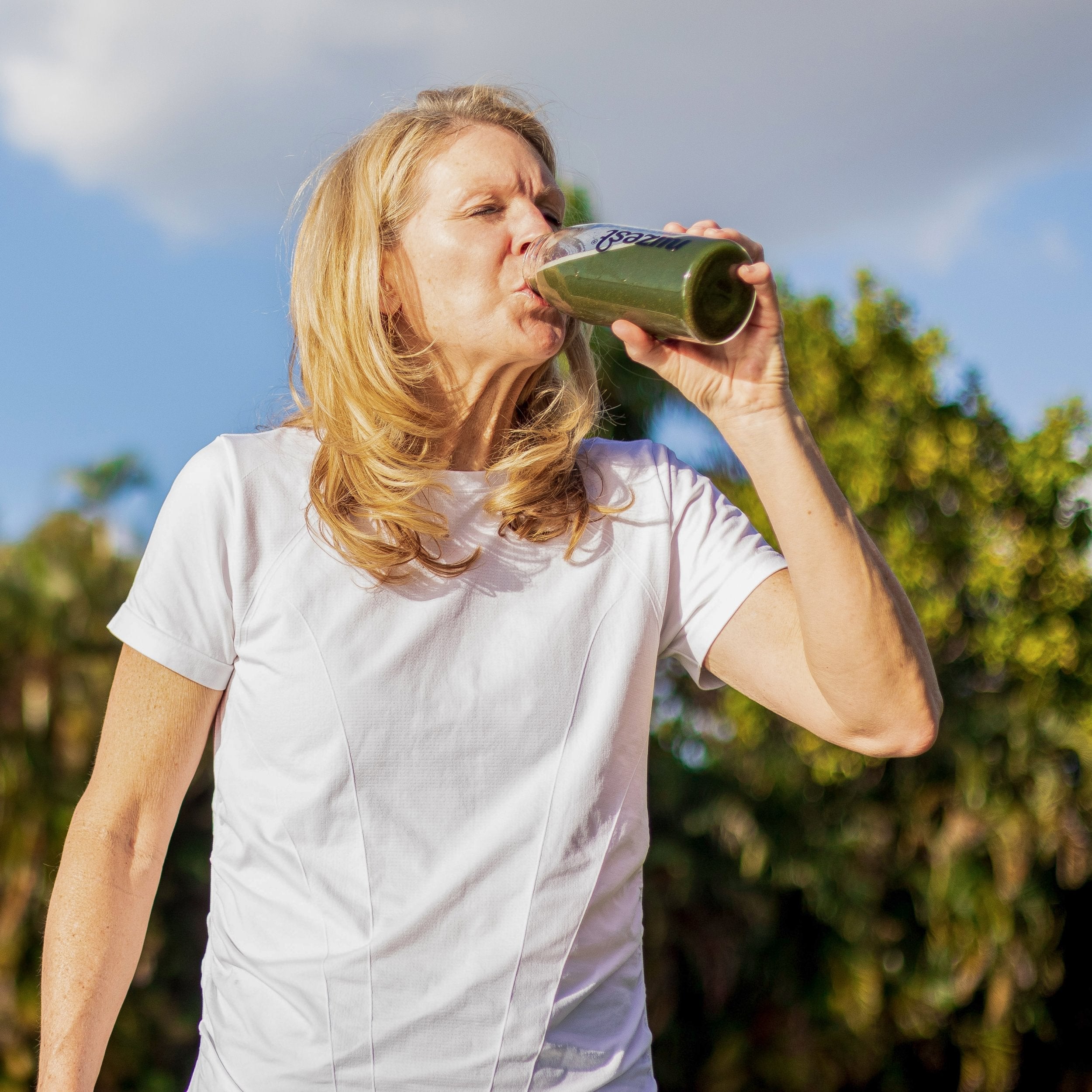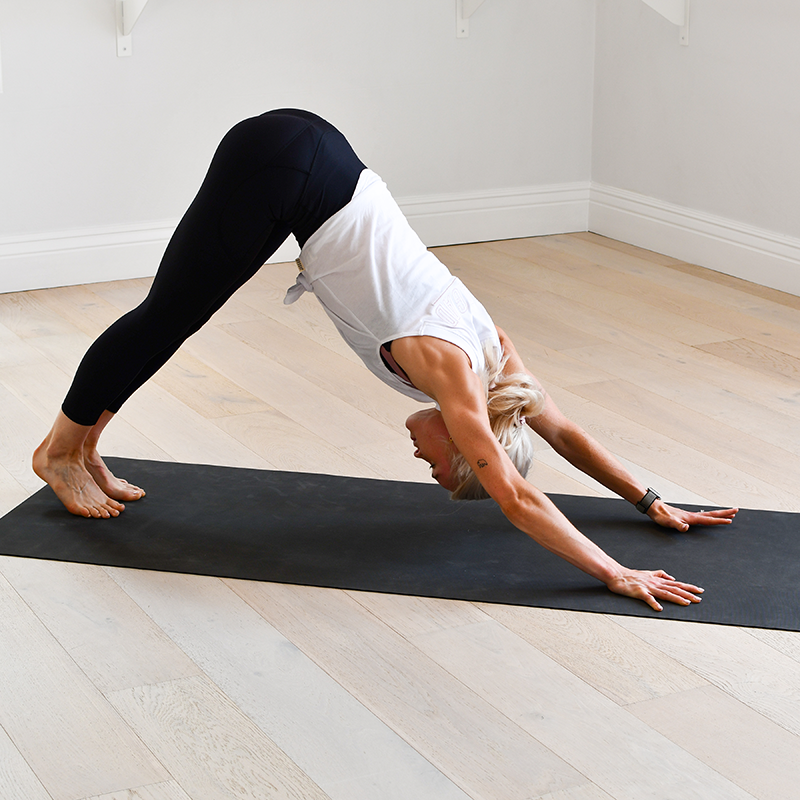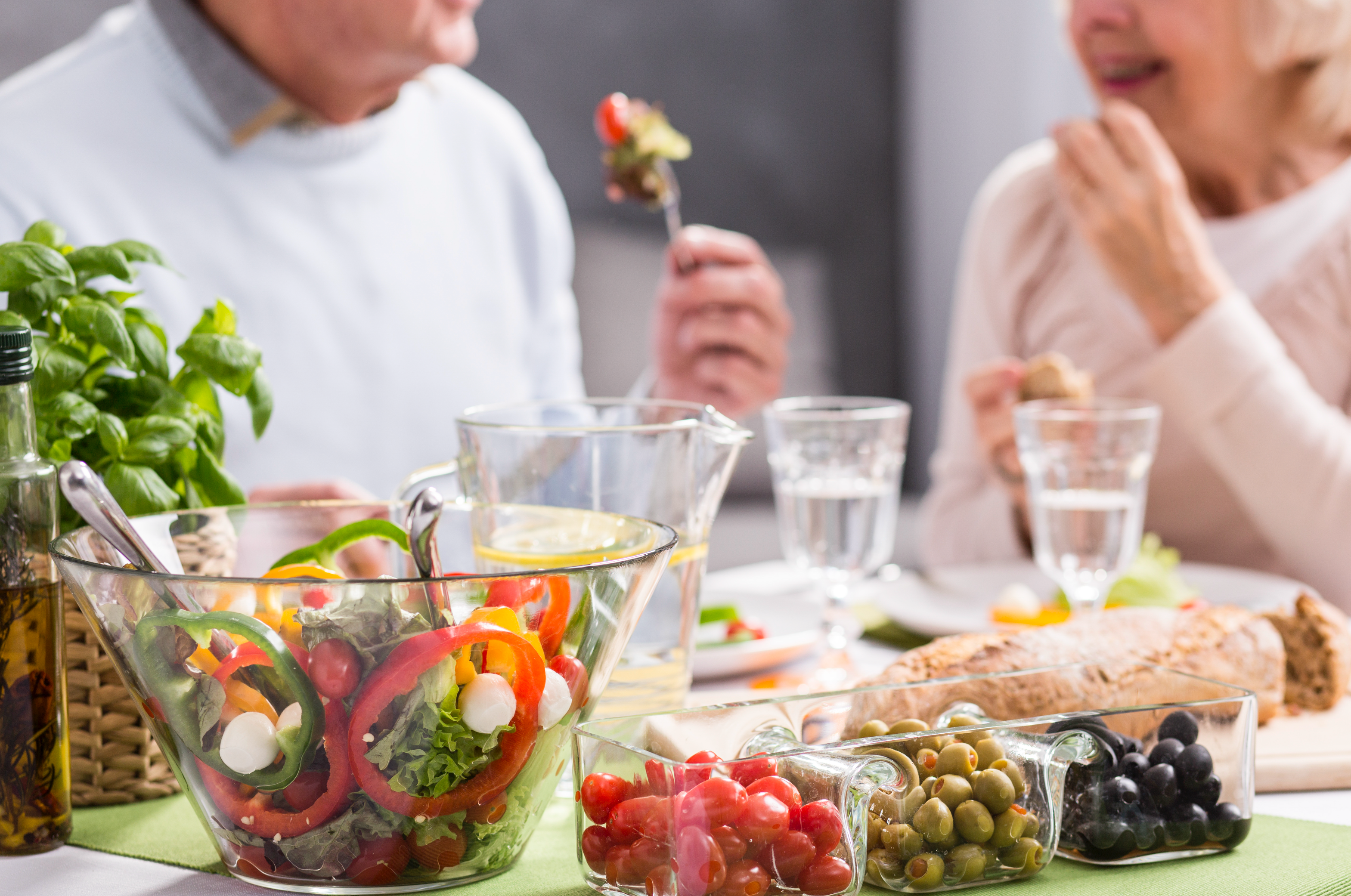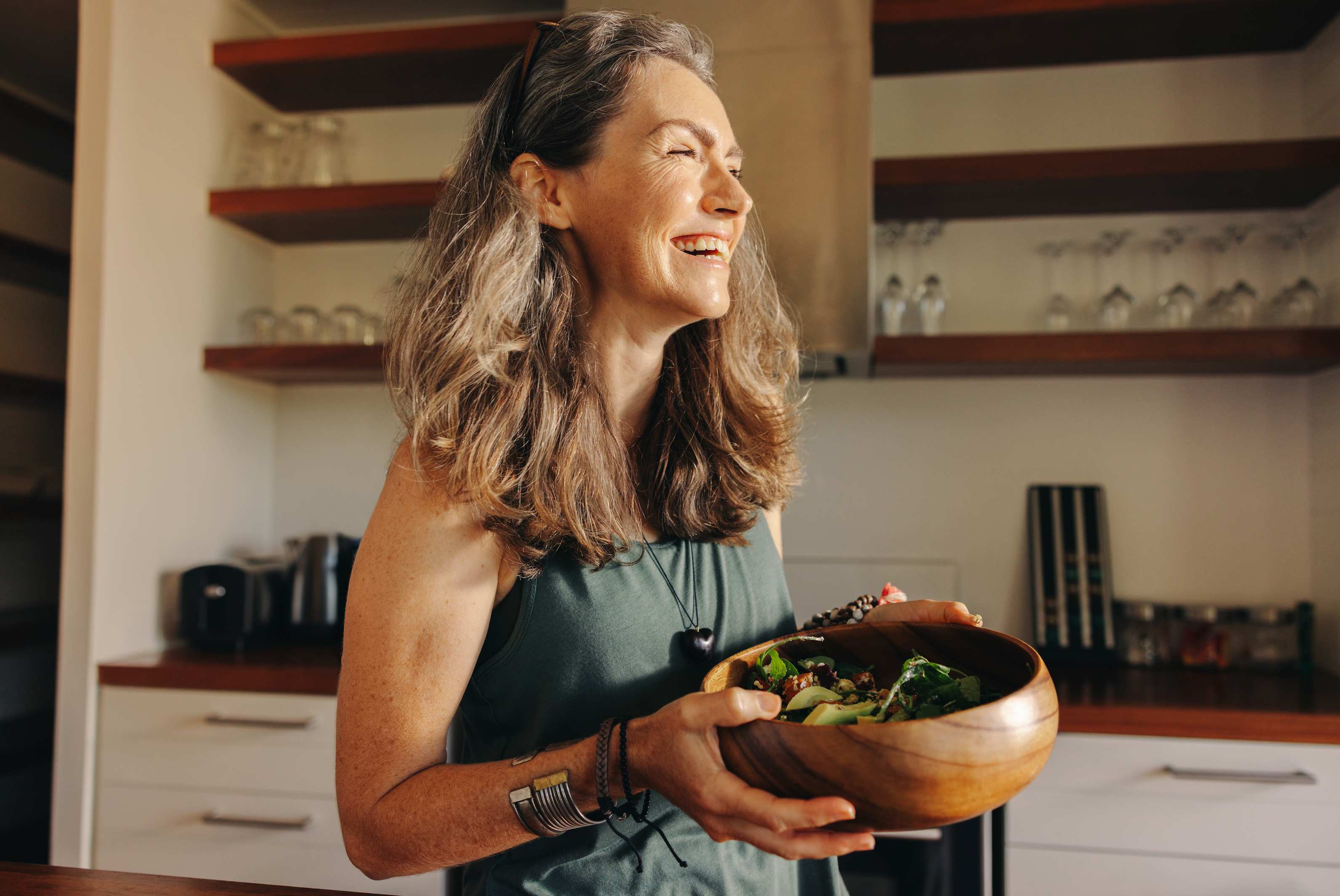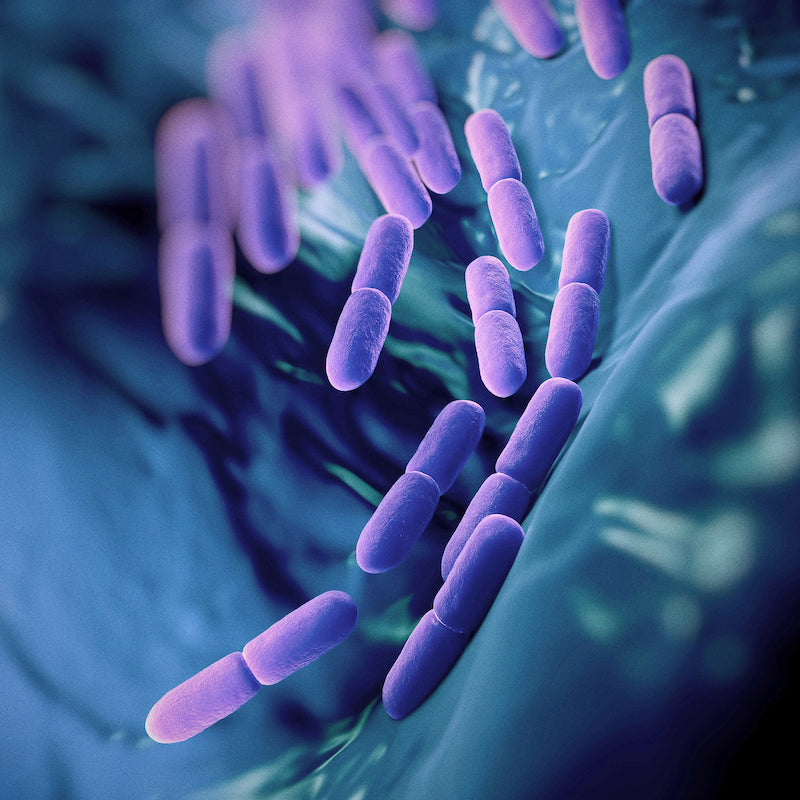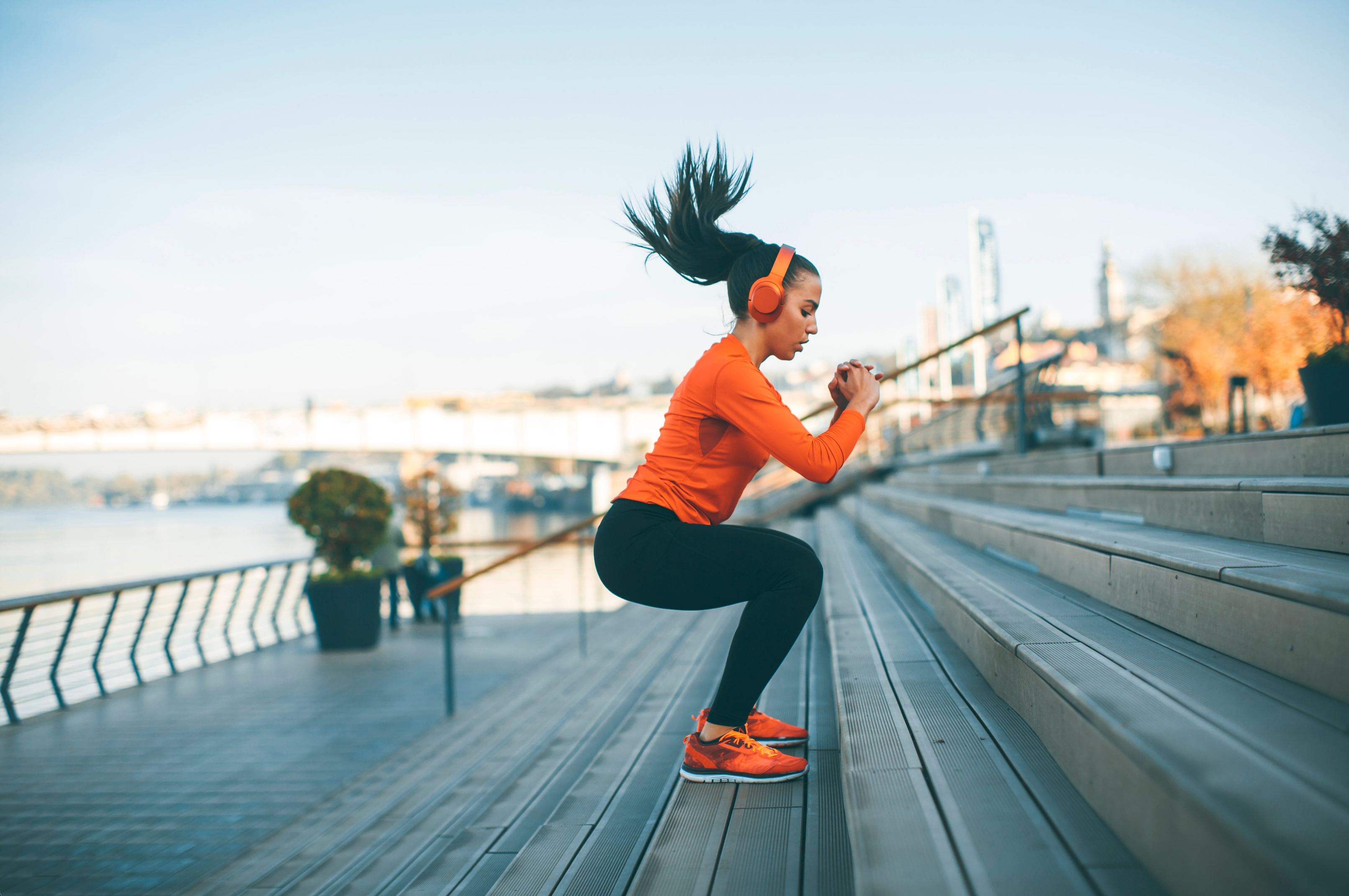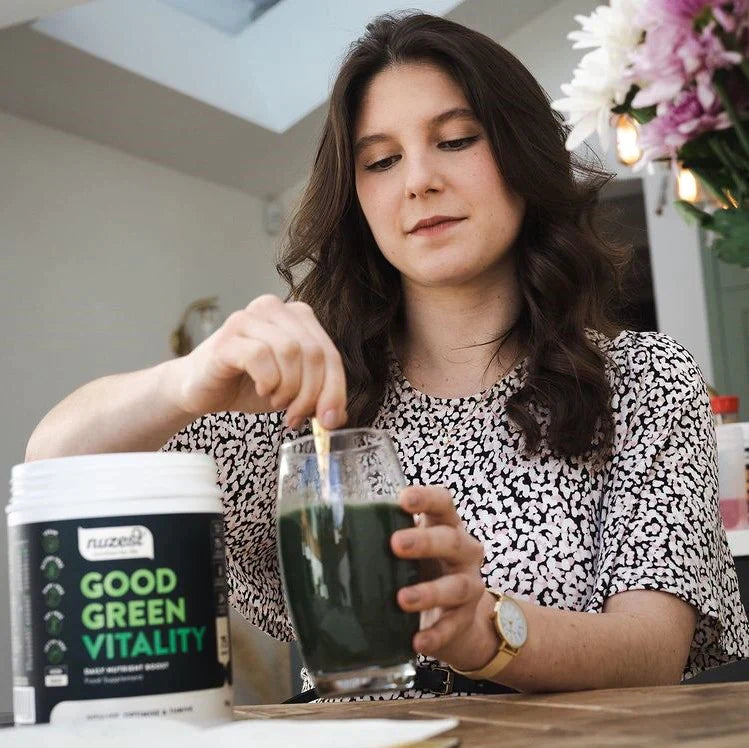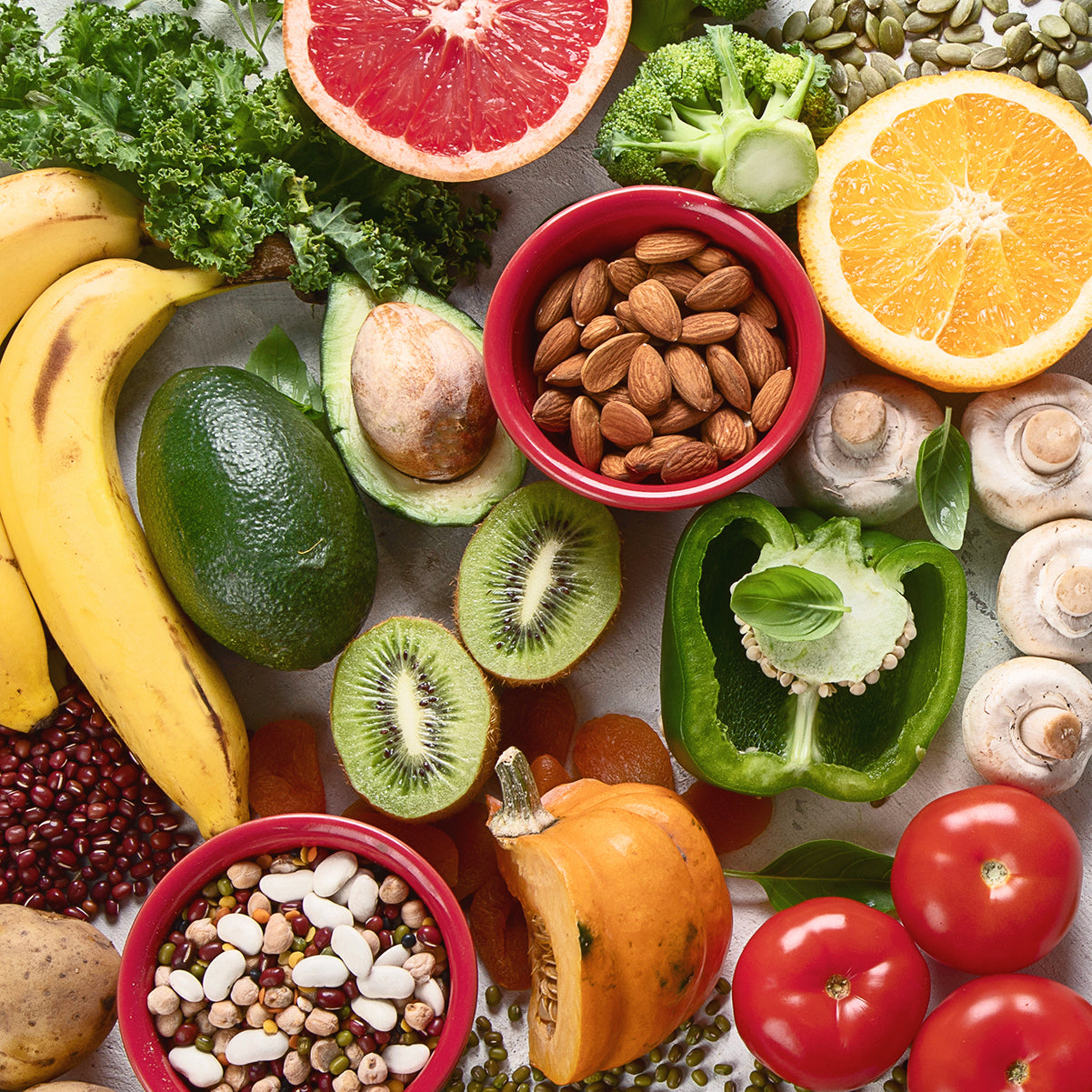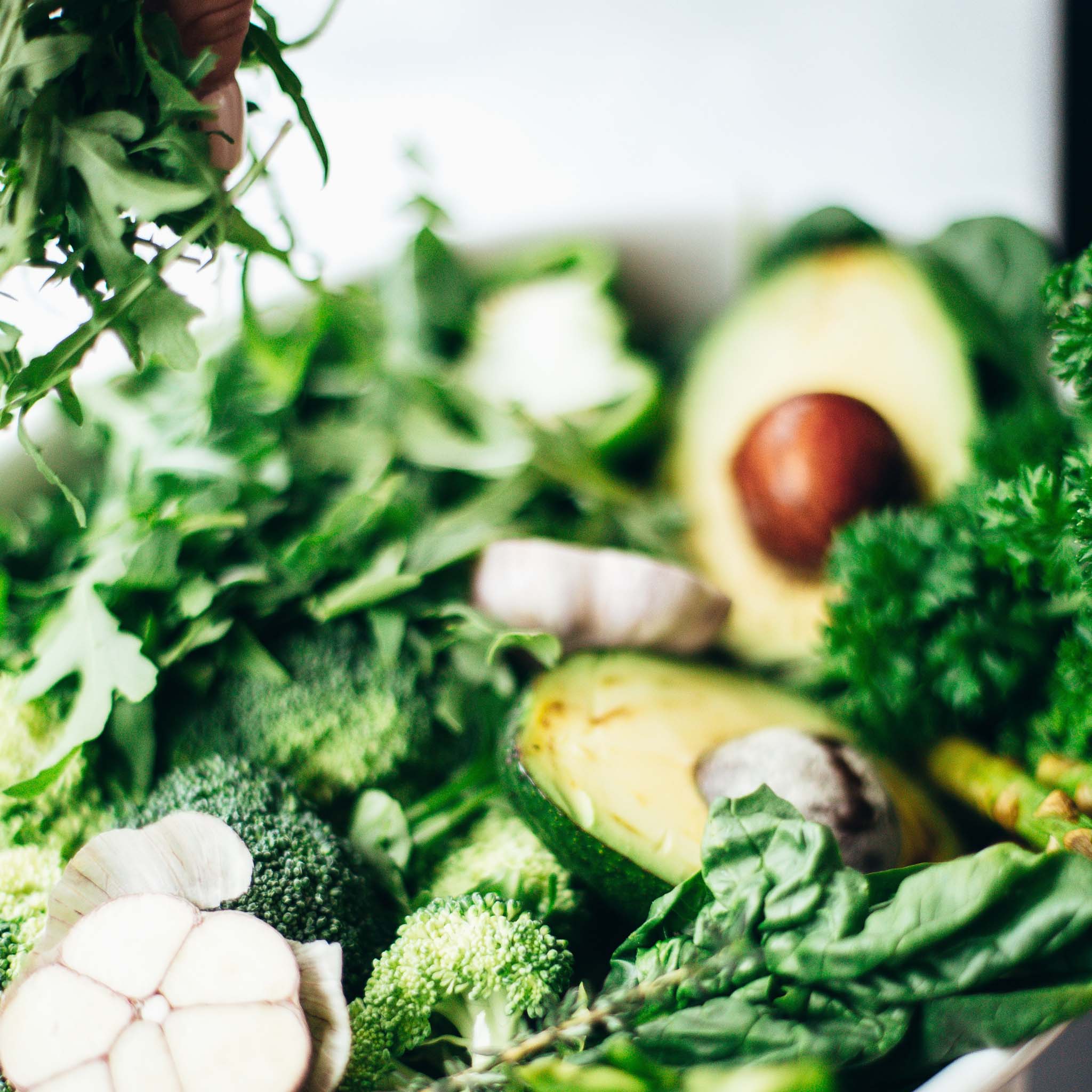Author: Megan Jones (Adv.Dip.NutMed, BHsc.NutMed)
Managing our health can be just like managing our bank accounts. Let’s say, if we were to discover a million dollars in an account, it definitely didn't happen by chance! It would have involved consistent deposits over (a very long) time.
Just as we must work to gain wealth, however, we must also work to maintain our health and wellbeing.
What’s more, to keep our health in good condition, we need to make more deposits than withdrawals. This way, the compound interest of healthy habits builds up as the years go on!
And how can we make these deposits? The beauty with investing in our health is, it's never too late to start - because the daily choices we make and the day-to-day activities we engage in all impact our overall quality of life.[1]
Here at Nuzest, we believe that making more conscious daily decisions surrounding our health and wellbeing will give us the healthy lifespan and longevity we deserve. For this reason, we have carefully formulated our daily multinutrient formula Good Green Vitality, containing 75+ wholefood ingredients including essential vitamins, minerals, antioxidants, herbs, adaptogens and more to work together synergistically, supporting all 11 body systems and ultimately, our health and longevity! Why not pair with our Clean Lean Protein in a delicious nutrient-dense smoothie to boost your protein intake and achieve your daily protein goals!
Read on to learn more about the benefits associated with investing in your health, and our top 10 ways to start investing in your health today to accruing a healthy return!
Key Takeaways:
- Investing in our health can provide a multitude of benefits both short and long term – such as disease risk reduction, and reduced spending on healthcare costs.2 4
- Focussing on health and wellbeing can encourage us to live a healthier lifestyle, with physical and mental health benefits.3
- Following a balanced diet and staying hydrated can help our bodies to function optimally – in terms of inflammation reduction and disease prevention.6 7 8
- Practising sun safety while still paying attention to sourcing vitamin D from whole foods and supplementation can reduce the risk of vitamin D deficiency while reducing the risk of sun damage and skin cancer as well.33 34
The benefits of investing in your health
The good news is that we all have many opportunities to invest in our health, with most of them requiring only basic lifestyle or priority adjustments. Investing in our health essentially means taking care of our body so it can take care of us.
In fact, it is arguably one of the best things that we can do for ourselves and also for those around us - with direct benefits such as:
- Reducing risk of illness and preventing disease before treatment is needed.[2]
- Encouraging us to live a healthier lifestyle, reaping the benefits physically, mentally and emotionally.[3]
- Saving money on healthcare costs in the long term.[4]
- Increasing productivity at work, and increasing motivation to achieve life goals.[5]
- Exercise, time in nature and social connection can all be extremely beneficial to our health both short and long-term, to reduce stress, promote longevity, and improve overall health outcomes.12 13 17 22
And, just like our finances, the return on our health investment is higher the earlier we invest.
Let’s take a look at some general guidelines to help us prioritise our health, and work on these investments!
Top 10 ways to start investing in your health today
1. Follow a balanced diet:
A nutrient-dense and balanced diet can help us lay the foundation for a healthier life, with more vitality and less incidence of disease - especially as we age. Incorporating a wide variety of fresh whole foods provides us with opportunity to consume the macro and micro-nutrients that our bodies require day-to-day in order to function optimally. [6] [7] Here at Nuzest we know that life these days can get in the way, and that reaching our nutrient goals through whole foods only can sometimes be challenging, which is why we have our daily Good Green Vitality with 75+ nutrients, to help fill in those nutritional gaps in our diets and support all 11 body systems to help us achieve optimal health.
2. Maintain adequate hydration:
The latest research tells us that individuals who maintain adequate hydration levels seem to enjoy better health, experience fewer chronic conditions like heart and lung disease, and live longer than those whose diet is lacking enough fluids.[8] While we need to drink an adequate amount of water throughout the day, and although the general recommendation is about 8 glasses (1.8-2L), individual needs vary. In fact age, body size, climate, activity level and lifestyle all influence how much water our body actually requires.[9]
Did you know? The foods we eat play a significant role in our hydration. All types of lettuce (and other greens like kale and spinach) have high water content - with iceberg lettuce the most hydrating, at 95 percent water by weight.[10]
3. Engage in regular exercise/spend time in nature:
Exercise offers a wide array of health benefits, positively impacting various aspects of both physical and mental wellbeing. In fact, the 2020 World Health Organization (WHO) guidelines on physical activity and sedentary behaviour reaffirm that physical activity is a ‘best buy’ for global public health.[11]
When it comes to investing in our health long term, endurance exercise, including high-intensity training to improve cardio fitness, can promote not only longevity but can slow down the ageing process. Strength training such as lifting weights or even using bodyweight or resistance bands slows down the loss of muscle mass that is associated with ageing and disease.[12] [13]
For individuals who are sedentary most of the time and do no to very little activity, it is particularly important to start physical activity of some kind, and limit sedentary time.[14]
It's also important to note however, that the type, intensity, and duration of exercise will vary based on individual health conditions, age, and fitness goals. Before starting a new exercise regime, especially for individuals with pre-existing health conditions, we always recommend consulting with a healthcare professional or fitness expert.
4. Focus on improving sleep hygiene:
Sleep is crucial, important for all aspects of health and wellbeing.[15] [16] Studies have reported that greater sleep health is linked to social rhythm regularity, improved social connection, and reduced mental health symptoms across the lifespan[17].
In fact, data from more than 50 years of research have demonstrated that sleeping too little or too much is associated with increased morbidity and mortality.[18] Research reports that sleeping less than 7 hours per night on a regular basis is associated with adverse health consequences, so for most of us, aiming for 7-9 hours per night is where we will see the positive health outcomes.[19]
5. Improve stress management and the mind-body connection:
Although stress is an inevitable part of life, research has shown that, as it relates to ageing, structured programs liked Mindfulness-Based Stress Reduction (MBSR) which incorporate breathwork, meditation, body scanning techniques as well as yoga show not only improvements to psychological and physiological processes, but also to overall health outcomes and improved stress management.[20] [21]
Throughout the lifespan, activities promoting hormetic stress, such as ice baths, cold showers, saunas and HIIT workouts promote longevity through enhanced activity of specific biochemical pathways, whereas in contrast, prolonged exposure to stress can result in “toxic stress” and shorten the lifespan.[22]
6. Schedule regular health check-ups:
Research tells us that regular medical check-ups can help with early chronic disease recognition and treatment, and are also associated with increased disease risk factor control, preventive service uptake, and improved patient-reported outcomes.[23]
7. Limit alcohol and avoid tobacco use:
Limiting alcohol consumption and avoiding tobacco use are critical for promoting health and longevity due to the significant impact these substances can have on various aspects of physical and mental wellbeing. This is in part due to the prolonged use of alcohol contributing to poor liver function, cognitive decline, increased risk of cardiovascular complications and disease, and weakened immunity, while tobacco use has been linked to poor respiratory health, increased risk of cardiovascular disease, increased cancer risk, physical acceleration of ageing of the skin, poor reduced reproductive health and impaired wound healing.[24] [25]
8. Foster friendships and social connections:
Did you know that friendships offer a range of health benefits, from improved physical health to increased mental and emotional wellbeing?[26] In fact, studies have reported that these social connections bring about increased feelings of belonging, purpose, and confidence, amplified levels of happiness, reduced levels of stress, and improved self-worth.[27]
9. Engage in continuous learning and hobbies:
Spending time on an activity that we enjoy can improve our mental health and wellbeing. What’s more, according to the latest research, having hobbies and a purpose in life such as a passion, a talent or a profession may extend not only our longevity, but also healthy life expectancy among older adults.[28] [29]
Studies have also demonstrated that lifelong learning may help sustain older adults’ psychological wellbeing.[30] [31]
10. Protect your skin in the sun:
Did you know that 1 in every 3 diagnosed cancers, globally, is a skin cancer?[32]
According to the WHO, four out of five cases of skin cancer, however, can be prevented, and UV damage can be minimized by limiting exposure to the sun.[33]
Recommended preventive measures for skin cancer include the use of sunscreen and protective clothing. Sun avoidance, such as seeking shade and avoiding exposure during the peak hours of 10 AM to 3 PM — is also a commonly used sun protection method.[34]
On the other hand, a lack of exposure to sunlight is widely identified as the main cause of vitamin D deficiency,[35] but did you know you can attain healthy levels of vitamin D through dietary measures as well? Servings of foods such as eggs, dairy, oily fish, mushrooms and liver can all contribute significantly to our daily vitamin D requirements, and even a single daily serve of our Good Green Vitality contains 20mcg of vegan vitamin D3!
References
- https://www.ncbi.nlm.nih.gov/pmc/articles/PMC6367881/
- https://www.longtermplan.nhs.uk/areas-of-work/prevention/treating-and-preventing-ill-health/
- https://www.ncbi.nlm.nih.gov/books/NBK284781/
- https://www.ncbi.nlm.nih.gov/pmc/articles/PMC8572548/
- https://pubmed.ncbi.nlm.nih.gov/24100855/
- https://www.ncbi.nlm.nih.gov/pmc/articles/PMC8824353/
- https://www.ncbi.nlm.nih.gov/pmc/articles/PMC9785741/
- https://www.thelancet.com/journals/ebiom/article/PIIS2352-3964(22)00586-2/fulltext
- https://www.ncbi.nlm.nih.gov/pmc/articles/PMC6315424/
- https://www.everydayhealth.com/dehydration/water-packed-foods-help-you-avoid-dehydration/
- https://ijbnpa.biomedcentral.com/articles/10.1186/s12966-020-01051-1
- https://pubmed.ncbi.nlm.nih.gov/30640736/
- https://doi.org/10.1097/MCO.0000000000000546
- https://ijbnpa.biomedcentral.com/articles/10.1186/s12966-020-01051-1
- https://www.ncbi.nlm.nih.gov/pmc/articles/PMC9518120/
- https://www.ncbi.nlm.nih.gov/pmc/articles/PMC8296445/
- https://www.ncbi.nlm.nih.gov/pmc/articles/PMC8058264/
- https://jamanetwork.com/journals/jamanetworkopen/fullarticle/2783720
- https://jamanetwork.com/journals/jamainternalmedicine/fullarticle/2788694
- https://pubmed.ncbi.nlm.nih.gov/30020672/
- https://www.ncbi.nlm.nih.gov/pmc/articles/PMC8473615/
- https://www.ncbi.nlm.nih.gov/pmc/articles/PMC4022128/?report=reader
- https://pubmed.ncbi.nlm.nih.gov/37303352/
- https://www.ncbi.nlm.nih.gov/pmc/articles/PMC8582987/
- https://www.ncbi.nlm.nih.gov/pmc/articles/PMC5905752/
- https://ccare.stanford.edu/uncategorized/connectedness-health-the-science-of-social-connection-infographic/
- https://www.ncbi.nlm.nih.gov/pmc/articles/PMC6125010/
- https://www.ncbi.nlm.nih.gov/pmc/articles/PMC4919481/
- https://www.ncbi.nlm.nih.gov/pmc/articles/PMC6609120/
- https://www.ncbi.nlm.nih.gov/pmc/articles/PMC5848758/
- https://www.uc.edu/news/articles/2022/01/4-reasons-to-become-a-lifelong-learner-for-the-new-year.html
- https://www.ncbi.nlm.nih.gov/pmc/articles/PMC8362234/
- https://www.who.int/news-room/questions-and-answers/item/radiation-ultraviolet-(uv)-radiation-and-skin-cancer
- https://www.ncbi.nlm.nih.gov/pmc/articles/PMC9025621/
- https://pubmed.ncbi.nlm.nih.gov/17634462/


